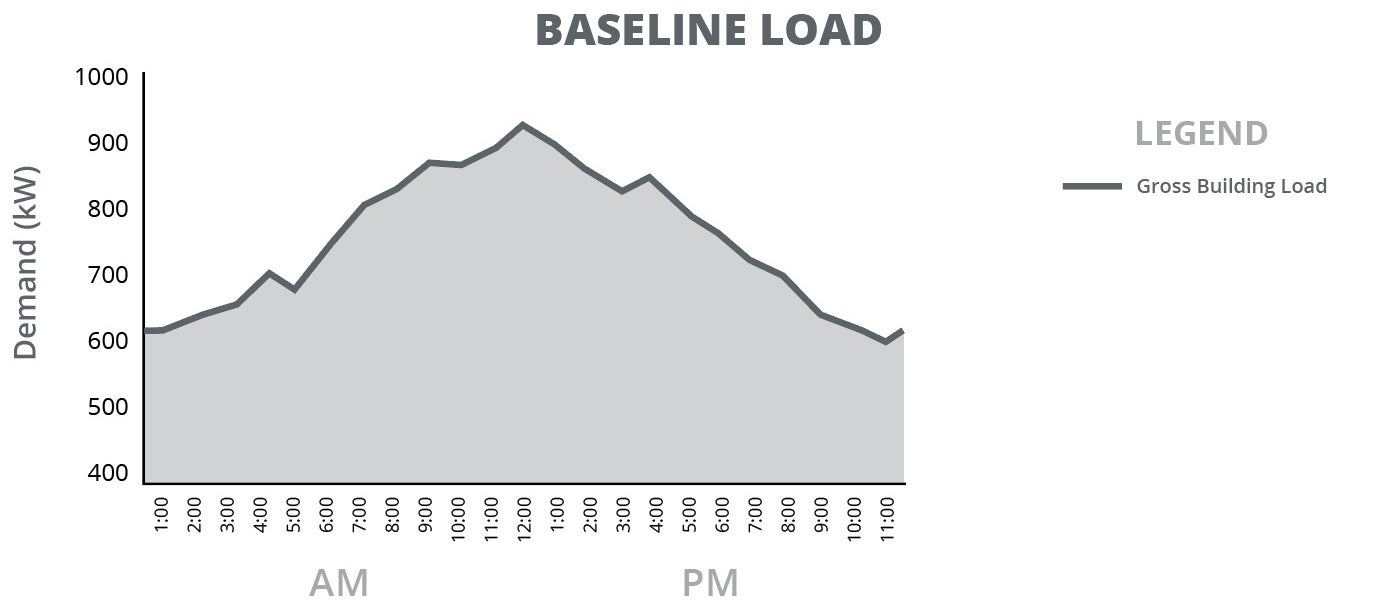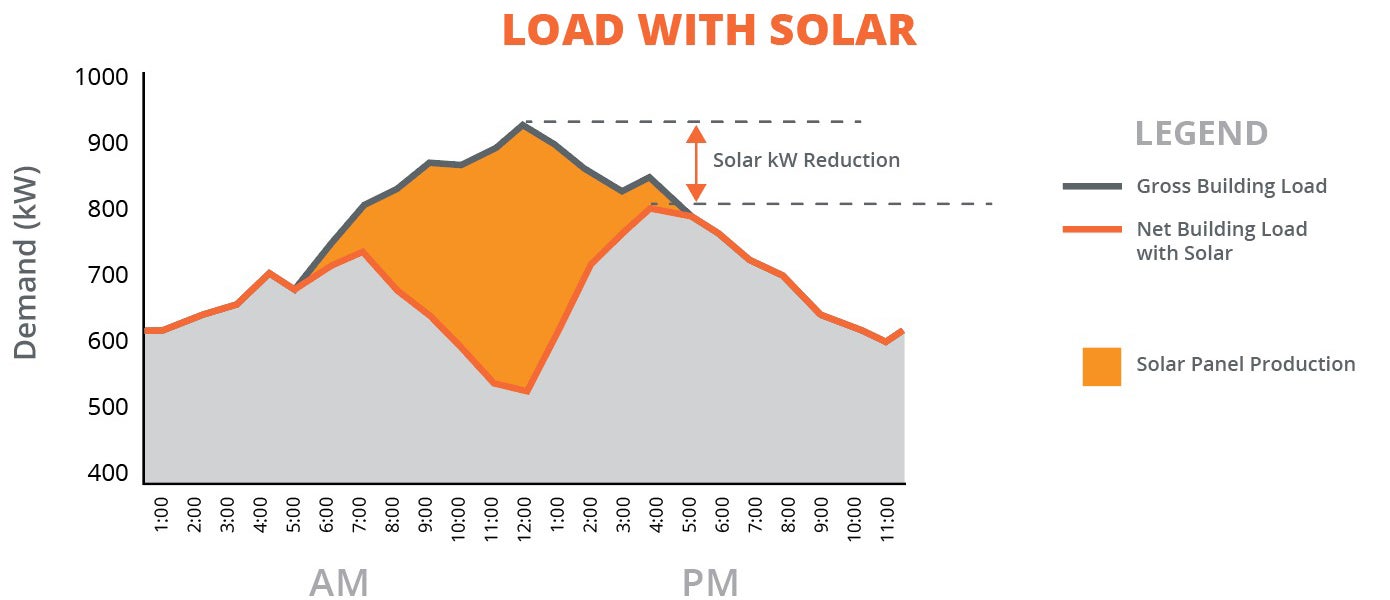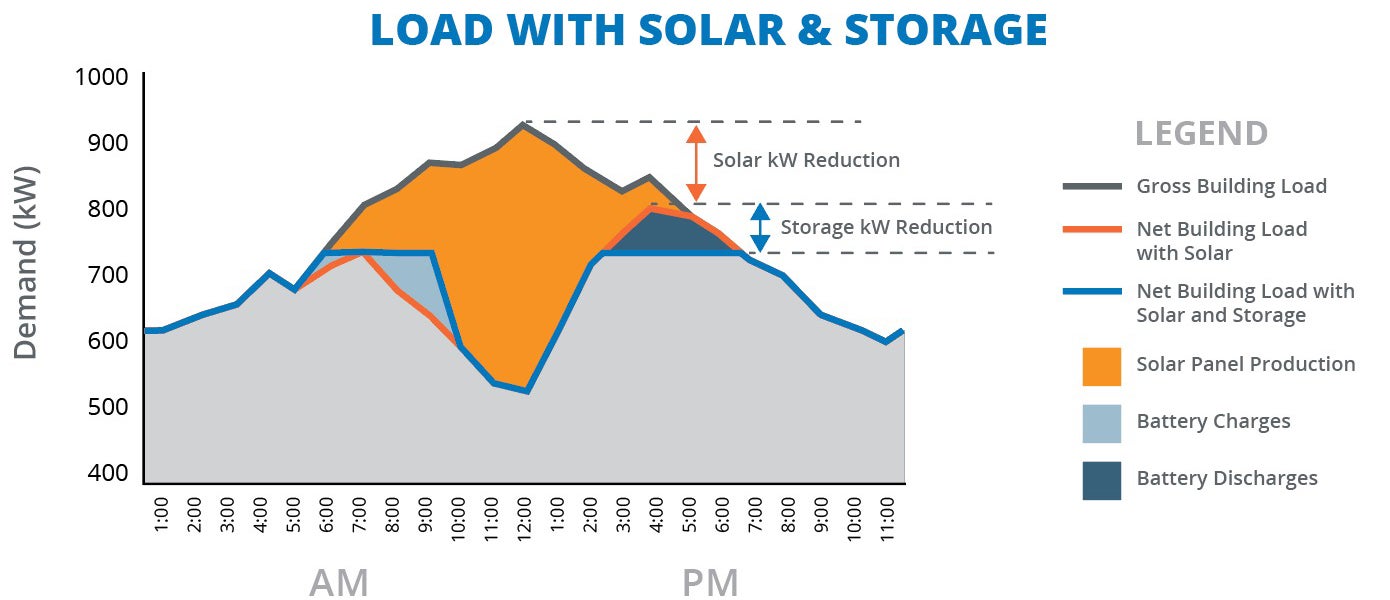
Editor’s Note: In February 2022, SunPower’s Commercial and Industrial Solutions business was acquired by TotalEnergies. Learn more about sustainability options for these industries.
It’s easy to see why the talk and excitement around commercial solar battery storage just keeps growing with each passing month. As the price of batteries continues to fall—and their performance continues to rise—more companies are taking a closer look at how battery storage can dramatically lower their monthly energy bills, especially when combined with a commercial solar panel system.
The batteries behind solar storage
First, let’s talk about the batteries typically used in commercial solar energy storage. With the exception of their size and the software used to manage them, the batteries you’d use to deliver solar power to your business are very similar to the ones you’d find in a cell phone, cordless drill or electric car.
Just like in those devices, most of the battery storage systems in large-scale commercial settings use lithium-ion chemistry and are about the size of a refrigerator (or several refrigerators, depending on how much power you need). And just like their little brothers, these battery storage systems get charged up (in this case, from energy produced by solar panels) and store power, then discharge that power whenever it’s needed.
Financial benefits of battery storage
As you probably know, commercial utility customers pay for the power they use (measured in kilowatt-hours, or kWh) and demand charges (measured in kilowatts, or kW), based on their highest usage within a billing cycle. This means a business is billed for spikes in usage beyond the number of kilowatt-hours they use, which could result in hundreds if not thousands of dollars every month in added costs. In some states, these demand charges make up more than half of a commercial customer’s monthly utility bill.
While alternative sources of energy like solar can absolutely help offset these demand charges (not to mention the obvious offsets for power usage), it’s really batteries that can be most effective in reducing (or “shaving,” as it’s also called) these peak periods, by delivering their stored power on-demand.
At this point, it might help to see some pictures to get a better idea of how demand charges work, how solar can offset them and how battery storage can help reduce them even further in times and situations when solar power isn’t available.
How do solar batteries work?
First, let’s look at a typical commercial customer’s load profile, where power is mostly used during the day. In this case, the customer isn’t using solar or battery storage to offset the costs of their energy usage, so demand tends to predictably rise and then fall over the course of a day.

Look familiar? If you’re a typical business, it should. Now, let’s see what happens when we add solar power to the picture, where energy from the sun can be used to significantly reduce the number of kilowatt-hours needed at certain times of the day. That load profile might look something like this:

As you can see in the orange area in the graphic above, the energy produced by solar is greatest between around 7am and 5pm every day (i.e., when the sun is shining), dramatically reducing the kilowatts needed during that period. But what about the time outside that period, when the business still needs significant power, but there isn’t enough sunlight available to offset that demand with solar? Can those remaining peaks in demand be further flattened out to help save a business money? They sure can—and that’s where solar battery storage kicks in.

Take a look at the graphic above. The lighter blue area shows how batteries can be charged in the first part of the day; the darker blue area shows where they can be discharged later in the day to reduce, or flatten, those peaks in demand. As you can imagine, in parts of the country where demand charges are high, the savings an organization gets from a 100- to 200-watt reduction in peak demand can be substantial, making commercial solar battery storage a great cost-saving solution.
Is solar energy storage right for your organization?
We’ve seen how battery storage works in conjunction with solar and how it can make a lot of sense for a business looking to reduce high monthly demand charges. Before we finish up, let’s take a look at some of the practicalities of commercial battery storage—and how to figure out whether it might be a worthwhile solution for your business.
Many people assume the only option is an outright purchase of an onsite solar energy storage system, with costs that typically start in the tens of thousands of dollars and go up from there. However, an ever-increasing number of solar power customers are leasing their battery storage directly from their provider, which helps eliminate any upfront costs and avoid ongoing operational and maintenance costs, too.
Whether they buy or lease, commercial solar customers who use battery storage can achieve payback in as few as three to five years through a combination of state rebates (California, for instance, has its Self-Generation Incentive Program), federal tax credits and utility savings achieved by reducing demand charges. Even if you don’t purchase a commercial solar battery storage system outright, you can still benefit from these rebates and credits as pass-alongs from your provider.
So how do you know if a combined solar power and battery storage solution is right for your business? It really comes down to how your business uses energy throughout the day, month and year. Most solar providers should be able to provide an in-depth analysis of your load profile, including how your overall power consumption and spikes in demand could be offset by the installation of solar panels and a battery storage system. At the same time, they should be able to give you a clear picture of the rebates, credits and other incentives available in your area when you invest in solar and energy storage for your business.
Thanks to the latest advancements in commercial solar battery storage, the opportunity to save thousands in demand charges every year is real—and really significant. As you evaluate commercial solar power providers and the right solutions, be sure to ask how solar energy storage can be included with your system, so you can determine whether it’s the right choice for your business.

